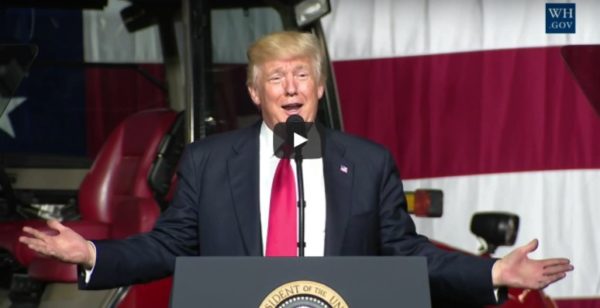Rural communities’ broadband internet access has become a key part of President Donald Trump’s $1 trillion infrastructure proposal, which would promote high-speed internet access across rural America, including schools, classrooms and libraries.
Schools’ access to high-speed broadband internet is not a new topic of debate, however–for years, policymakers and ed-tech stakeholder groups have advocated for more funding and better infrastructure to help schools establish reliable high-speed internet connections.
Much of those advocacy efforts have focused on the fact that rural students cannot develop the skills needed to compete and succeed in an increasingly global workforce if they cannot connect to the internet and use digital resources and tools.
“We have to make sure American farmers and their families, wherever they may be, wherever they may go, have the infrastructure projects that they need to compete and grow. And I mean grow against world competition, because that’s who you’re up against now,” Trump said in remarks delivered at Kirkwood Community College in Cedar Rapids, Iowa.
Next page: This isn’t the first time broadband internet has been emphasized
“We must also ensure that these students have the broadband internet access they need in order to succeed and thrive in this new and very modern and very changed economy and world. That is why I will be including a provision in our infrastructure proposal–$1 trillion proposal–you’ll be seeing it very shortly–to promote and foster enhanced broadband access for rural America also.”
Policymakers and internet advocacy groups welcomed the focus on broadband connectivity.
“We welcome the President’s focus on improving America’s rural broadband infrastructure. Across the nation, more than 3,700 K-12 schools, 79 percent of them in rural and small towns, lack access to the fiber they need to take advantage of broadband enabled digital learning opportunities,” said Evan Marwell, Founder and CEO of EducationSuperHighway, a nonprofit focused on upgrading internet access in U.S. public schools.
“But we can learn from the Cedar Rapids schools in the community where the President outlined his ambitious goal. These schools were recently able to significantly and affordably increase the bandwidth on their fiber connections as a result of the FCC’s successful E-rate modernization order,” Marwell continued. “We can’t leave our kids behind in the effort to upgrade our broadband infrastructure, in Iowa or anywhere. That’s why we need to continue to support the successful E-rate program and its ability to make sure that every school in America has the fiber choices it needs to connect every school with gigabit broadband, every classroom with high-speed wi-fi, and every student with a whole new world of digital learning opportunities.”
“On our visit to Kirkwood Community College, President Trump and I saw the high-tech equipment used in the school’s precision agriculture program,” Iowa Governor Kim Reynolds said, referring both to Trump’s focus on agricultural infrastructure and broadband internet access. “Precision agriculture optimizes yields while conserving resources. Each advance made in technology is another step in the right direction for both farmers and the environment.
“I’m also encouraged by the president’s commitment to rural Internet connectivity,” Gov. Reynolds said. “So much of the technology farmers rely on requires broadband access. When availability is limited, farmers are limited too. President Trump is working with Congress to best address that challenge.
In a February 2017 paper from the Brookings Institute, authors Blair Levin and Carol Mattey note that the Federal Communications Commission’s (FCC) most recent broadband report “found that 39 percent of the rural population (23.4 million Americans), compared to just 4 percent of the urban population, lacked access to what the FCC regards as basic fixed broadband internet service—25 megabits per second (Mbps) up/3 Mbps down.”
But that’s not the worst news, according to the paper–20 percent of the population lacked access to service at an older and now-outdated broadband internet definition of 4/1 Mbps.
“With the Trump Administration dangling the prospect of a $1 trillion infrastructure program, now is the time to consider whether a new approach might more effectively address the rural broadband problem. After all, whatever one thinks of the current position of the United States, it is hard to envision how, in the 21st century global information economy, any country can be great without great broadband to rural as well as urban communities,” the authors said.
- 4 ways to support work-based learning - April 23, 2024
- Prioritizing inclusivity in game-based learning - April 22, 2024
- Friday 5: Universal Design for Learning - April 19, 2024

